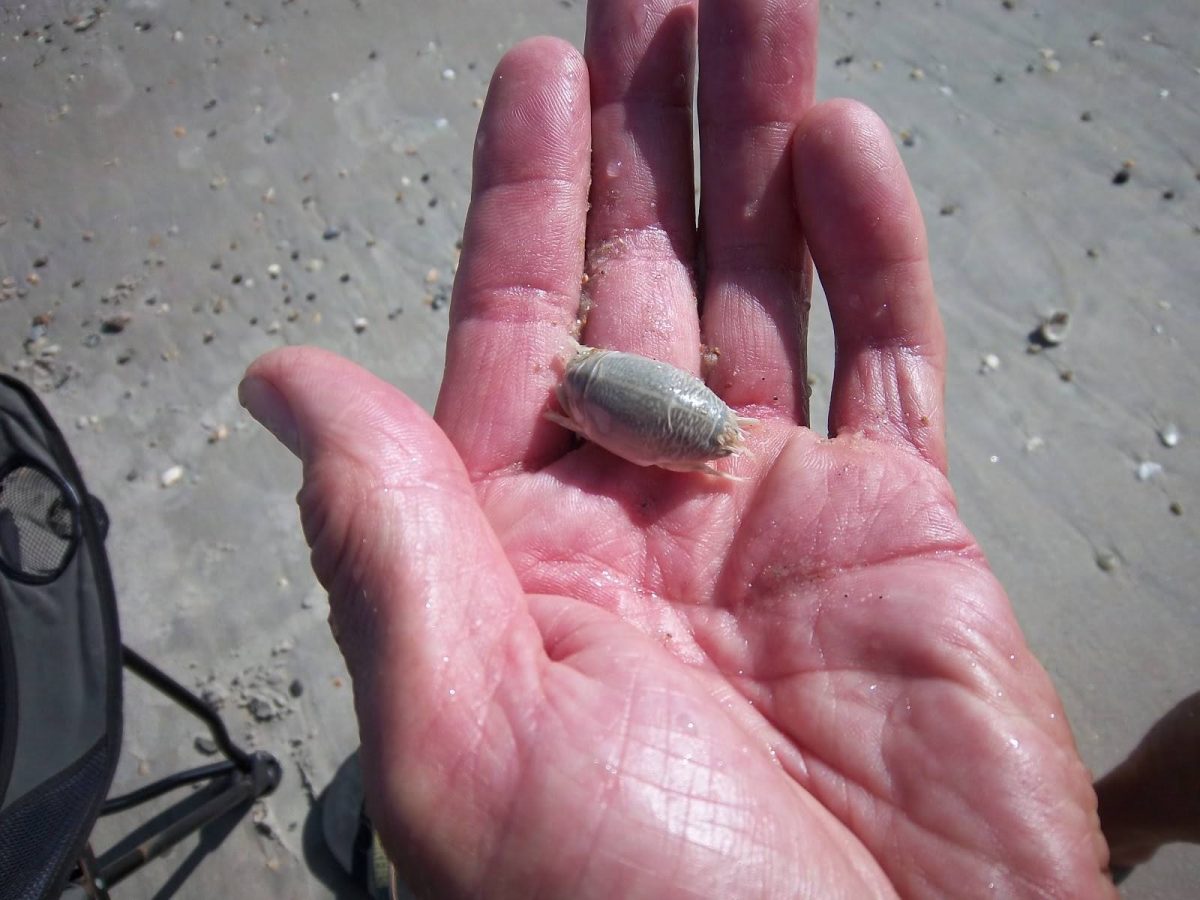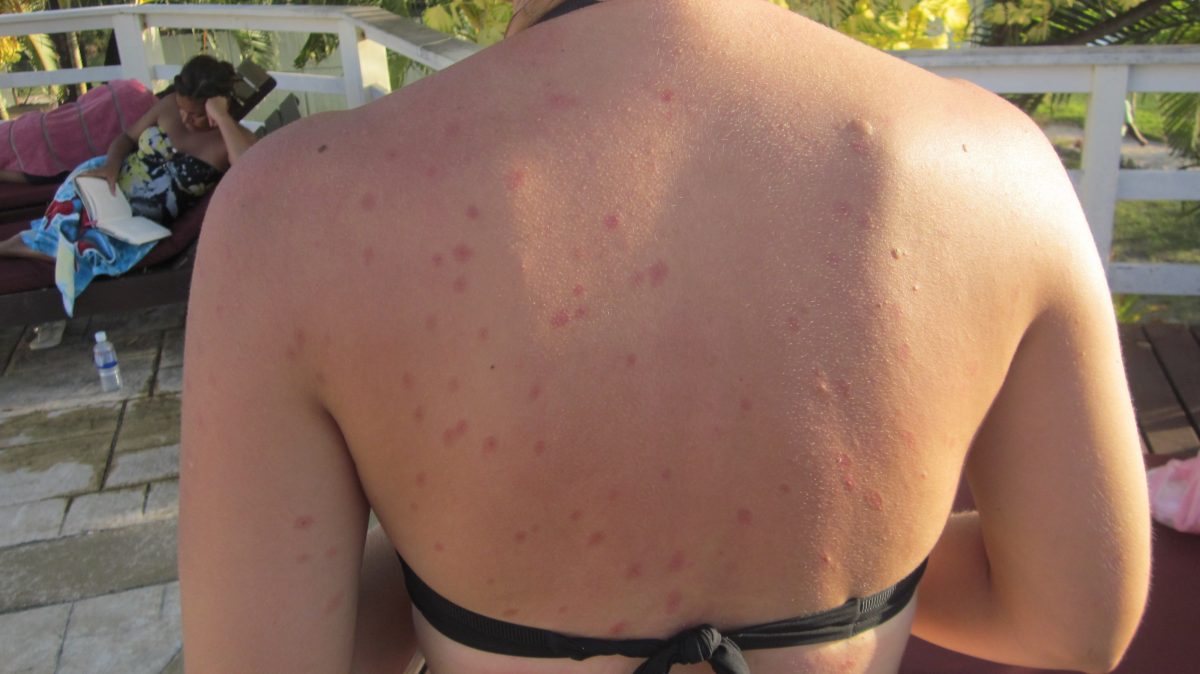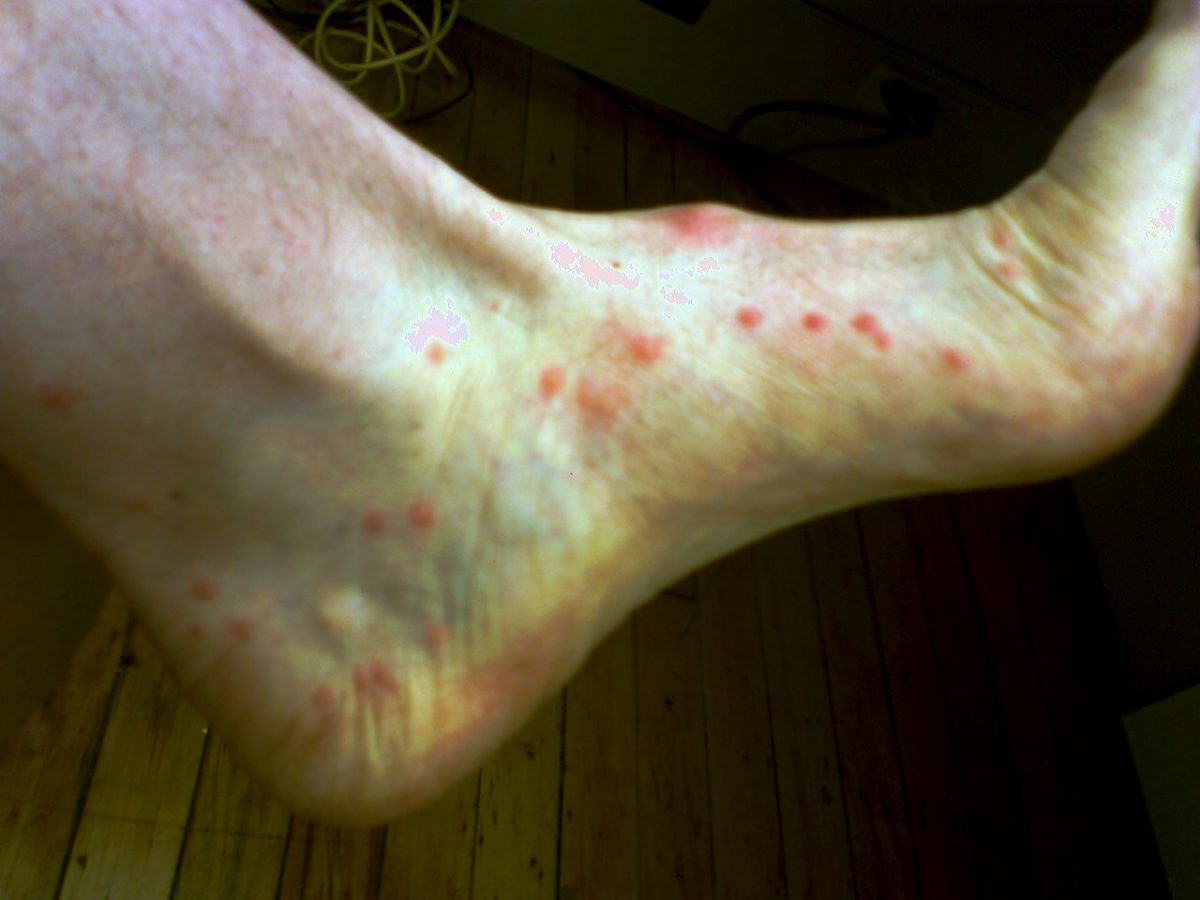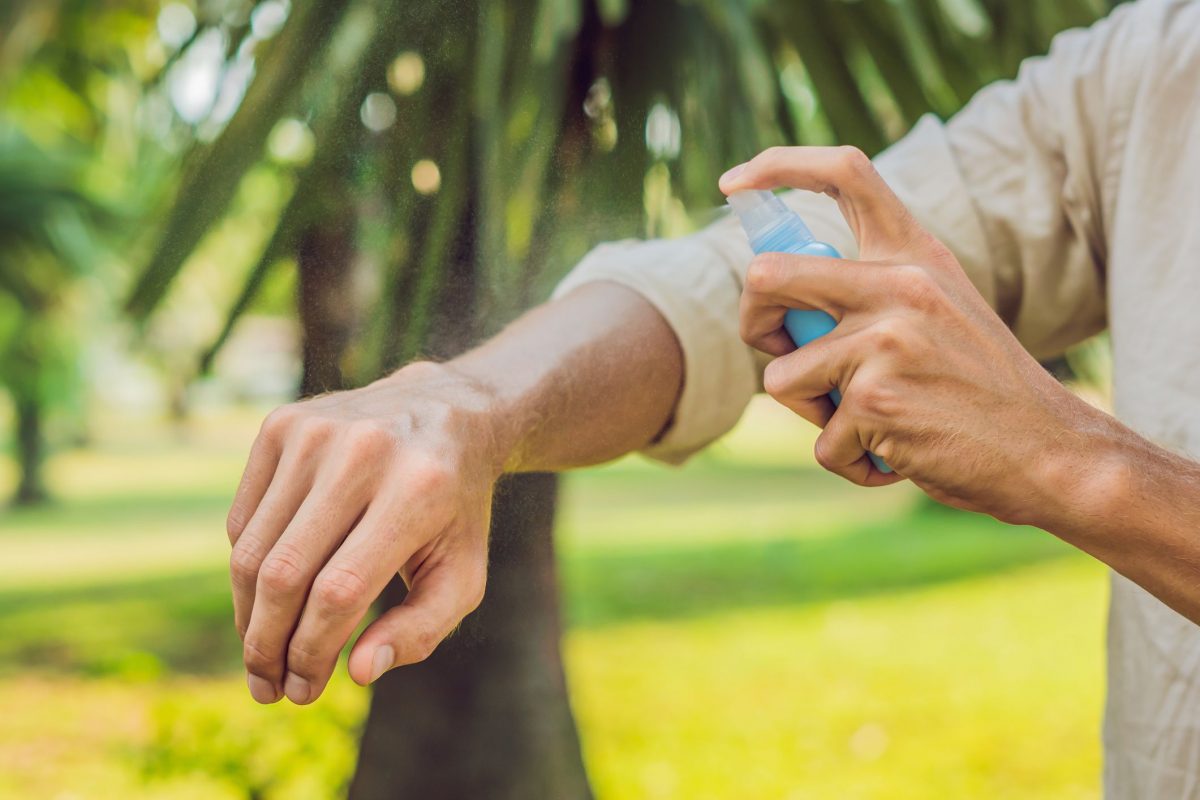How To Avoid Sand Fleas While Traveling

Do you love the feeling of sand under your feet when at the beach? I guess we all do, right? Well, besides water sports, games, swimming and basking in the sun. Unfortunately, a single bite by a sand flea can change all the fun into excruciating pain real quick and spoil a good day.
Imagine packing your belongings and having your vacation cut mid-way because of some silly sand fleas. Hold it, you don’t have to imagine all that when you can avoid sand fleas while travelling.
What Are Sand Fleas?

Photo© forgardening.org
Sand fleas are rather small insects which feed on the blood. Like mosquitoes, they bite on a living body and suck blood from the veins of their hosts. Besides the sandy beaches, they are also found in desert sand and swamps.
Sand Flea Bites
When out in the beach having a happy moment, it may be difficult to tell immediately if you get bitten by sand fleas. This is because some sand fleas bites may be painless whereas some bites can be insanely searing. A sand fleas bite can also be itchy.
We can’t blame the insects too much; they are parasites which happen to live on blood. If you get bitten, you’re just another unlucky prey. Most of these sand fleas are active at dawn and night. So, you can tell when you’re likely to get bitten. If you happen to be a beach buff and prefers swimming at night or strolling at dawn searching for seashells, these are the times of the day that you are most susceptible to suffering a sand flea bite.
What do Flea Bites Look Like?

Photo© folkhouse.wordpress.com
They resemble red bumps or black spots depending on how long it has been since you got bitten.
Normally, a sand-flea bites for two reasons:
1.
High affinity for fresh blood
Getting a taste of fresh blood is all that matters for a sand flea. Sand fleas have special saliva that keeps the blood of the host from clotting. Most of the blood-sucking pests including mosquitoes use this mechanism to feed on their prey.
As the fleas draw blood from you, your nerves will react to the bite causing the pain followed by an itchy inflammation at the spot bitten.
2.
The female sand flea sees your skin as a perfect nesting ground
This means that the female flea sees your body as a great environment to squeeze itself into for brooding. They do so by burrowing themselves deep under your skin, where they lay eggs and eventually hatch them. This would leave your skin swollen with black spots.
Flea bites occur mostly around the lower body parts especially the legs. It is because fleas can only jump to forty centimetres high from the ground.
What’s more, flea bites are dangerous and can cause tungiasis, a skin disease.
Effects of Sand Flea Bites on You

Photo© www.fleabitesonhuman.com
A sand flea attacks often in bunches. That is to say, when you get attacked by fleas you are likely to suffer multiples itching bites. Their bites are painful and would even initiate allergic reactions in your body.
In case your body responds negatively to sand flea bites, you are at risk of developing allergic reactions if you get bitten. Moreover, a flea bite allergy would result in dizziness, fever, nausea, headache and swelling on the lymph node. Therefore sand fleas should be kept at bay by all means.
Are Sand Flea Bites Treatable?
Fortunately, yes!
Flea bite rash can be extremely itchy and very tempting to scratch. However, you should avoid scratching them at all cost as it would cause wounds which might result in infections.
The most viable easy access immediate treatment for flea bites is to apply a topical cream made of hydrocortisone and calamine to the wound. The two are proven medicinal jellies that will relieve you of the itchy feeling immediately.
In case you miss out on the topical cream, an alternative is a homoeopathic baking powder paste. Nevertheless, you should seek medical attention for more specialized treatment if the condition on your skin gets worse.
How to Avoid Sand Flea Bites
Prevention is always better than cure. The following are ways in which you can keep yourself safe from sand fleas:
Avoiding the beach after rains
You should refrain from visiting the beach, especially after rainfalls. Rainfall is often accompanied by a cool, which triggers adrenaline rush in creatures like crustaceans and sand fleas. This excites them and enhances their hunger for the next blood meal; setting them out in droves.
Use lounge chairs
As opposed to basking on a towel, you would consider lying on lounge chairs that are elevated above the sand. When you lay on a towel, you are closer to the sand and fleas will easily crawl on to your skin and bite you.
Applying DEET repellants
DEET repellants drive flea away and some have smells that are toxic to fleas. Consider your feet up when applying the repellant.

Photo© www.menshealth.com
How To Get Rid Of Sand Flea Bites
Here are some helpful steps to get rid of sand flea bites:
- Identification: identify locations or your properties that could be infested by sand fleas, this will help prevent more bites. It could be your luggage, carpet or bed.
- Seal entry points: Sealing the possible holes and crevices that fleas may use to get to you will deny them entry.
- Treatment: An easy first aid treatment is sprinkling some salt or baking powder around the point where a sand flea bit or used to enter under your skin and leaving it for a day dehydrate the flea and thereby limiting its life.
- Clean up: Keep your luggage, carpets, and bedroom clean.
- Pets: In case you have pets, take them to the vet for treatment for flea infestation.
- Prevention: This is where diatomaceous-earth comes in handy. You may scatter it across the front yard to help keep the fleas at bay.
The Bottom Line
It’s common to hear complains about sand flea bites from friends and family while on a vocation at the shores. While these bites can be awfully painful or itchy, they can be prevented.
If you suffer a flea’s bite, don’t panic because it can be treated and the pain can go away in minutes. I hope you found the information on this post insightful to help you prevent or treat sand flea bites.

